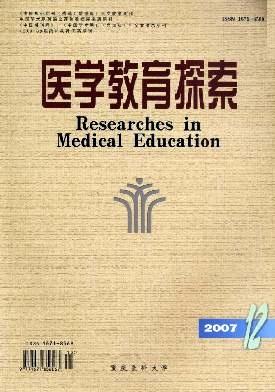Application of 3DBody software assisted PBL teaching in orthopedic clinical teaching
引用次数: 0
Abstract
Objective To evaluate the effect of 3DBody software assisted problem-based learning (PBL) teaching in orthopedic teaching. Methods Undergraduates of clinical medicine from grade 2013 who had internship in our hospital were divided into experimental group and control group. Undergraduates in the experimental group were taught by 3DBody software assisted PBL teaching, with designed questions and the method of using 3DBody software handing to students before class. While undergraduates in the control group were taught by traditional teaching, with the use of textbooks and multimedia courseware. Examination scores of theory and probation were compared between the two groups. Questionnaires were used to evaluate the subjective perception of different teaching method among the participants in each group. Results Scores of theoretical examination in the experimental group (84.6±5.9) were higher than those in the control group (73.2±6.1); scores of probation examination in the experimental group (17.7±2.1) were significantly higher than those in the control group (12.7±1.9); the degree of satisfaction in the experimental group (9.2±0.8) was significantly higher than that in the control group (7.2±1.3); all differences were statistically significant (P<0.05). Conclusion 3DBody software assisted PBL teaching can significantly improve the effectiveness of orthopedic teaching and enhance students' learning initiative and interest, which is worth promoting. Key words: 3DBody software; Problem-based learning; Teaching of Orthopedics; Degree of satisfaction应用3DBody软件辅助PBL教学进行骨科临床教学
目的评价3DBody软件辅助问题学习(PBL)教学在骨科教学中的效果。方法将在我院实习的2013级临床医学本科生分为实验组和对照组。实验组采用3DBody软件辅助PBL教学,设计问题,并在课前将3DBody软件的使用方法交给学生。对照组采用传统教学法,使用教材和多媒体课件进行教学。比较两组学生的理论和试用期考试成绩。问卷调查用于评估各组参与者对不同教学方法的主观感受。结果实验组理论考试成绩(84.6±5.9)高于对照组(73.2±6.1);实验组试用期考核成绩(17.7±2.1)显著高于对照组(12.7±1.9);实验组的满意度(9.2±0.8)明显高于对照组(7.2±1.3);结论3DBody软件辅助PBL教学能显著提高骨科教学的效果,增强学生的学习主动性和兴趣,值得推广。关键词:3DBody软件;基于问题的学习;骨科教学;满意度
本文章由计算机程序翻译,如有差异,请以英文原文为准。
求助全文
约1分钟内获得全文
求助全文

 求助内容:
求助内容: 应助结果提醒方式:
应助结果提醒方式:


